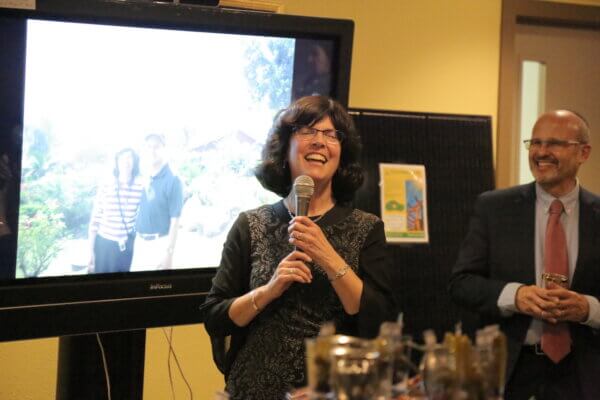SPARKS OF TORAH
VOLUME 61 NUMBER 1
MAY 25, 2012
SIVAN 4, 5772
PARSHAS BAMIDBAR/ SHAVUOS
Candle-lighting Time: 7:58 PM
This edition of Sparks of Torah is dedicated in memory of Leah bas Miriam, a”h, Rabbi Leban’s grandmother, on the occasion of her first yahrzeit. May her soul be bound in the bonds of eternal life.
FYI
TJE Rabbis teach Shavuos classes Saturday night at Kehilas Bais Yisroel, 295 S. Locust St., starting at 11:45pm. All are welcome.
Retreat Reunion this Wednesday hosted by Alex and Pearl Grinberg.
New Downtown Lunch and Learn with Rabbi Leban meets this Friday at noon, hosted by Jay Kamlet.
Led by Eve Levy and Ellyn Hutt, TJE will take 30 women to Israel this summer.
Join TJE at the Siyum Hashas at Metlife Stadium with 100,000 Jews from around the world. RSVP now.
Scissors in Hand
by Rabbi Raphael Leban
Every dog has its day. Every child loves to play. And every yid has his pey, or fey or at the very least a hey.
The Talmud in Tractate Shabbos tells us that the name Yisroel is an acronym for the words, ‘yesh shishim revivos osios latorah,’ meaning ‘there are 600,000 letters in the Torah.’ These 600,000 letters are representative of the 600,000 Jews that were counted in this week’s parsha, Parshas Bamidbar. Add it all up and it means that every Jew has his or her own letter in the Torah.
This doesn’t mean you should bring your scissors and a doggie bag to shul this weekend for Shavuos. But it does mean that when you get there, you may feel like you’ve already been there for thirty-three hundred years. Each one of us has a direct connection to G-d’s Torah, a unique place in the unfolding of His will for mankind, and the source of that connection is Shavuos.
When we write a Torah scroll, it must be written perfectly and completely. If even a single letter is missing the Torah scroll is considered invalid until it is repaired. So too, if even one Jew is missing, the Torah is not complete.
When the Jewish People pulled up in front of Mt. Sinai, the verse says, “…and he camped there around the mountain.” It doesn’t say ‘they’ camped, it says ‘he’ camped. They were all present and accounted for, with such unity that they were like a single person.
And so we need to be today. Every Jew, man or woman, parent or child, learned or unlearned, impassioned or nonplussed—unified around our Torah.
Leave your scissors at home, but come look for your letter just the same. Prepare to look deeply into the Torah, to gaze back to the very root of your soul, side by side with the rest of the Jewish People.
Have a wonderful Shavuos!
Looking Over Our Shoulders
by Rabbi Dovid Nussbaum
The Torah enumerates the responsibilities of each of the Levite families in transporting the various parts of the Mishkan when they traveled. The sons of Kehas had the duty to carry the most sacred items contained within the Mishkan. One of the most important vessels that they carried was the Aron. The curtains which separated the two inner sanctums of the Mishkan were also included in the vessels which they carried. When the curtains are mentioned in the Torah, the verse concludes that they had to carry ‘the curtains and all of its accessories’. Netziv questions what the Torah is referring to when it says, “and all of its accessories.”
He explains that two curtains were woven each year and this verse alludes to the fact that members of this family of Levites were the ones in charge of that project. When they arrived in Israel and built the permanent Beis Hamikdash, then this important duty was assigned to one of the prestigious families that were involved in the Beis Hamikdash. He goes on to say that involvement with the curtains helped one in his Torah studies. He compares participation with this task as to those who were engaged in the construction of the Aron which also provided assistance with one’s Torah studies. Although the thoughts of the Netziv are very insightful, we must clarify how involvement with the curtains provided assistance in one’s Torah studies.
Perhaps the initial reflection might be that the curtains separated the most holy area of the Mishkan from the lesser sanctified areas. Although the sanctum outside of the curtains also contained objects that were used in the functioning of the Mishkan, the Menorah and the Table with the showbread upon it, nonetheless their status was diminutive as compared to the Aron. The idea to be gleaned is that we must place Torah on the highest pedestal so that our appreciation of its greatness is superlative. When our admiration for Torah is so exceptional, our impetus to spend our free moments studying Torah will also be augmented manifold.
There is perhaps another insight that we can glean from the curtains. They not only separated the Aron from the other areas of the Mishkan, they also covered or protected the Aron which housed the Torah given at Sinai. It is stated in Pirkei Avos that one must make a fence around the Torah. That, of course, is addressing the need to take cautionary steps in order to protect the main body of Torah law. However, in addition to that concept, there is another important idea being mentioned. Even though the curtains were seemingly an insignificant separation or covering, nonetheless they did serve a purpose. The point is that when it comes to Torah, everything, no matter how insignificant it may be, truly counts. Every bit of information is needed in order for one to have a complete and full mastery of Torah.
As we count down the hours until Shavuos, let us prepare ourselves by using the remaining time to be as involved in Torah study as much as possible. In that way, when we sit down to actually study Shavuos night, we will have gained an increased admiration for Torah study and its value.
Byte For Shabbos
When the nation traveled in the desert, the Torah was in the middle of the camp, equidistant from each and every tribe. Torah must be equally accessible for everyone and anyone.
CHOFETZ CHAIM
A Question for the Rabbis
By Rabbi Mordechai Becher
The Torah enjoins the Levites to guard the Temple (Numbers 1:53). Maimonides states that this was not for security, but rather an honor guard to show respect for the Temple (Beit Habechirah 1:1). According to Rashi (17:28), the guard was to prevent the general population of Israelites and the impure from entering areas that are forbidden to them. Rabbi Avraham Borenstein was asked if there is an obligation nowadays to guard the Temple Mount. He responds that according to Maimonides, since there is no Temple, there is, therefore, no obligation of an honor guard. However, according to Rashi, we may still be obligated to prevent the impure from entering the environs of the Temple, which are holy even while in ruins. He rules in accordance with Maimonides that there is no obligation to guard the Temple Mount, and he even forbids it. He argues that since a Levite may only do his designated job, and today’s Levites don’t know their designated tasks, they are therefore forbidden to guard (Avnei Nezer, Yoreh Deah 2:449).
Reprinted with permission from Parsha Partner, a publication of Partners in Torah. Please add us to your weekly Parsha reading list. www.partnersintorah.org/parshapartner
Joke of the Week
One of my co-workers decided it was time to shed some excess weight. She took her new diet so seriously that she even changed her driving route to avoid the bakery. One morning, however, she arrived at work carrying a giant cheesecake. We gaped at her, but she kept smiling.
“This is a very special cheesecake,” she explained. “I accidentally drove by the bakery this morning, and there in the window was this cake! I felt this was no accident, so I prayed, ‘HaShem, if you want me to have that delicious cheesecake, let me have a parking spot directly in front of the bakery’, and sure enough,” she continued, “the ninth time around the block, there it was!”
GOOD SHABBOS AND HAPPY SHAVUOS!


